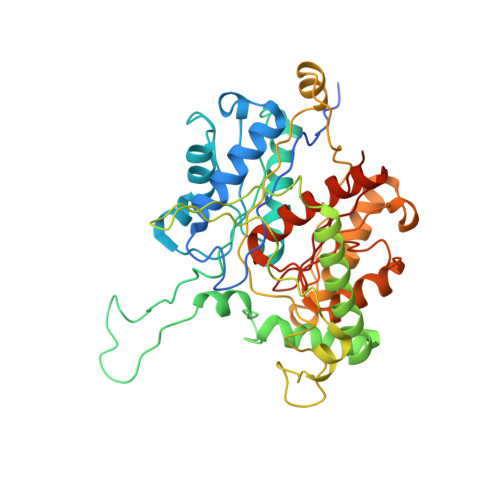Coenzyme A-free activity, crystal structure, and rational engineering of a promiscuous beta-ketoacyl thiolase fromRalstonia eutropha.
Fage, C.D., Meinke, J.L., Keatinge-Clay, A.T.(2015) J Mol Catal B Enzym 121: 113-121
- PubMed: 26494979
- DOI: https://doi.org/10.1016/j.molcatb.2015.08.007
- Primary Citation of Related Structures:
4W61 - PubMed Abstract:
Thiolases catalyze the formation of carbon-carbon bonds in diverse biosynthetic pathways. The promiscuous β-ketoacyl thiolase B of Ralstonia eutropha ( Re BktB) has been utilized in the in vivo conversion of Coenzyme A (CoA)-linked precursors such as acetyl-CoA and glycolyl-CoA into β-hydroxy acids, including the pharmaceutically-important 3,4-dihydroxybutyric acid. Such thiolases could serve as powerful carbon-carbon bond-forming biocatalysts in vitro if handles less costly than CoA were employable. Here, thiolase activity is demonstrated toward substrates linked to the readily-available CoA mimic, N -acetylcysteamine (NAC). Re BktB was observed to catalyze the retro-Claisen condensation of several β-ketoacyl- S -NAC substrates, with a preference for 3-oxopentanoyl- S -NAC over 3-oxobutanoyl-, 3-oxohexanoyl-, and 3-oxoheptanoyl- S -NAC. A 2.0 Å-resolution crystal structure, in which the asymmetric unit consists of four Re BktB tetramers, provides insight into acyl group specificity and how it may be engineered. By replacing an active site methionine with an alanine, a mutant possessing significant activity towards α-methyl substituted, NAC-linked substrates was engineered. The ability of Re BktB and its engineered mutants to utilize NAC-linked substrates will facilitate the in vitro biocatalytic synthesis of diketide chiral building blocks from feedstock molecules such as acetate and propionate.
Organizational Affiliation:
Department of Molecular Biosciences, The University of Texas, Austin, TX 78712, USA.














